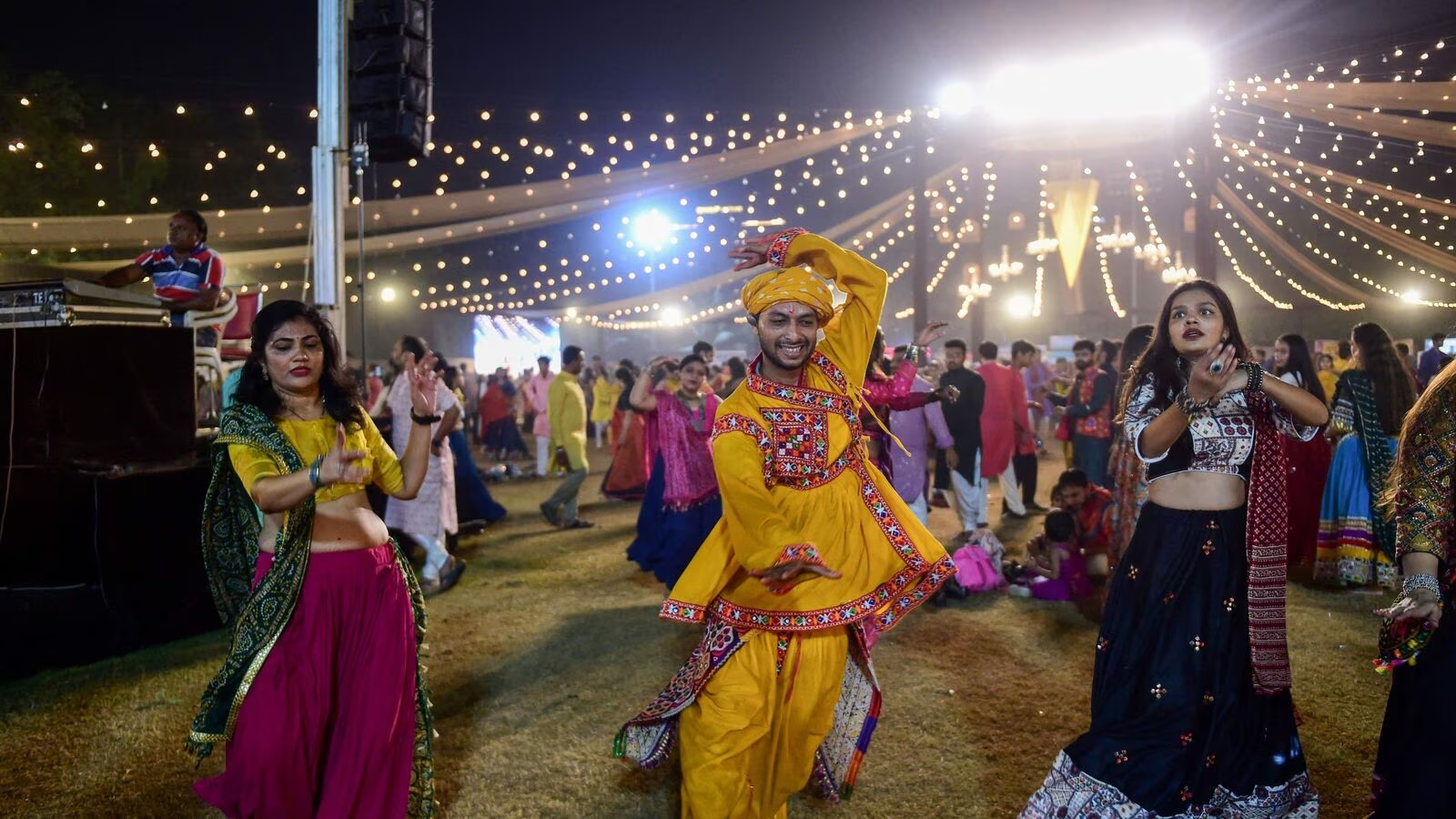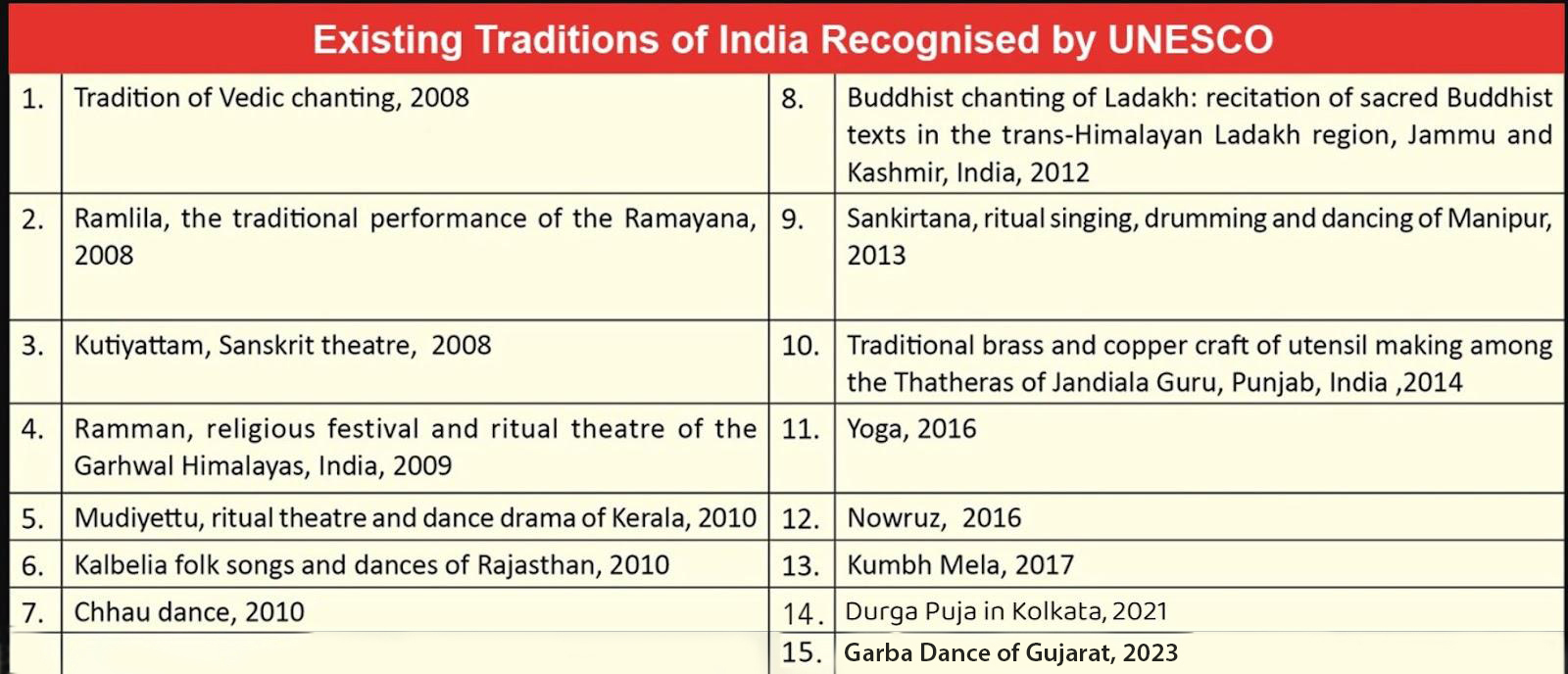UNESCO Recognition to Gujarat's Garba Dance
Why in News?
Recently, the United Nations Educational, Scientific and Cultural Organization (UNESCO), during its 18th session of the Intergovernmental Committee in Botswana, officially added Gujarat's iconic Garba dance to its esteemed Representative List of Intangible Cultural Heritage(ICH) of Humanity.
- The Garba dance form is the 15th cultural item from India to make it to the UNESCO list. Kolkata’s Durga Puja was the last one added in 2021.
What is the Garba Dance?
- Garba is a form of Gujarati folk dance that is performed during the nine-day Hindu festival of Navratri, which celebrates the victory of good over evil.
- The name Garba comes from the Sanskrit word for womb, implying life and creation.
- Garba dances celebrate fertility, honor womanhood, and pay respect to any of an array of mother goddesses.
- The dance also customarily marks a girl’s first menstrual cycle and, later, her imminent marriage.
- The dance is performed around a centrally lit lamp or a picture or statue of the Goddess Shakti, who represents the feminine energy of the universe.
- Garba is accompanied by rhythmic music, singing, and clapping. The dance can be performed by anyone, regardless of age, gender, or social status.
- Modern Garba is heavily influenced by Dandiya Raas, a dance traditionally performed by men. The merger of these two dances has formed the high-energy Garba dance that is seen today.
- Garba fosters social equality by diluting socio-economic, gender, and rigid sect structures.
- It continues to be inclusive and participative by diverse and marginalized communities, strengthening community bonds.
What is UNESCO Intangible Cultural Heritage (ICH)?
- About:
- UNESCO ICH is a term that refers to the practices, representations, expressions, knowledge, skills, and cultural spaces that are recognized as part of the cultural heritage of a community, group, or individual.
- UNESCO defines ICH as “the mainspring of humanity’s cultural diversity and its maintenance a guarantee for continuing creativity.”
- In 2003, UNESCO adopted the Convention for the Safeguarding of the Intangible Cultural Heritage (ICH), signifying a commitment to protect, promote, and transmit the diverse expressions of human culture.
- The convention establishes two crucial lists for ICH.
- Representative List: Showcasing the global diversity of ICH, this list raises awareness of its significance and importance.
- Urgent Safeguarding List: Identifying threatened ICH, this list calls for immediate measures to ensure its survival.
- Examples of ICH:
- Languages, oral traditions, literature, and poetry.
- Performing arts, such as music, dance, and theatre.
- Social practices, rituals, and festive events.
- Knowledge and practices concerning nature and the universe.
- Traditional craftsmanship, such as pottery, weaving, and metalwork.
- Existing UNESCO's ICH list of India:
UPSC Civil Services Examination, Previous Year Question (PYQ)
Mains
Q.1 Safeguarding the Indian Art Heritage is the need of the moment. Discuss. (2018)

